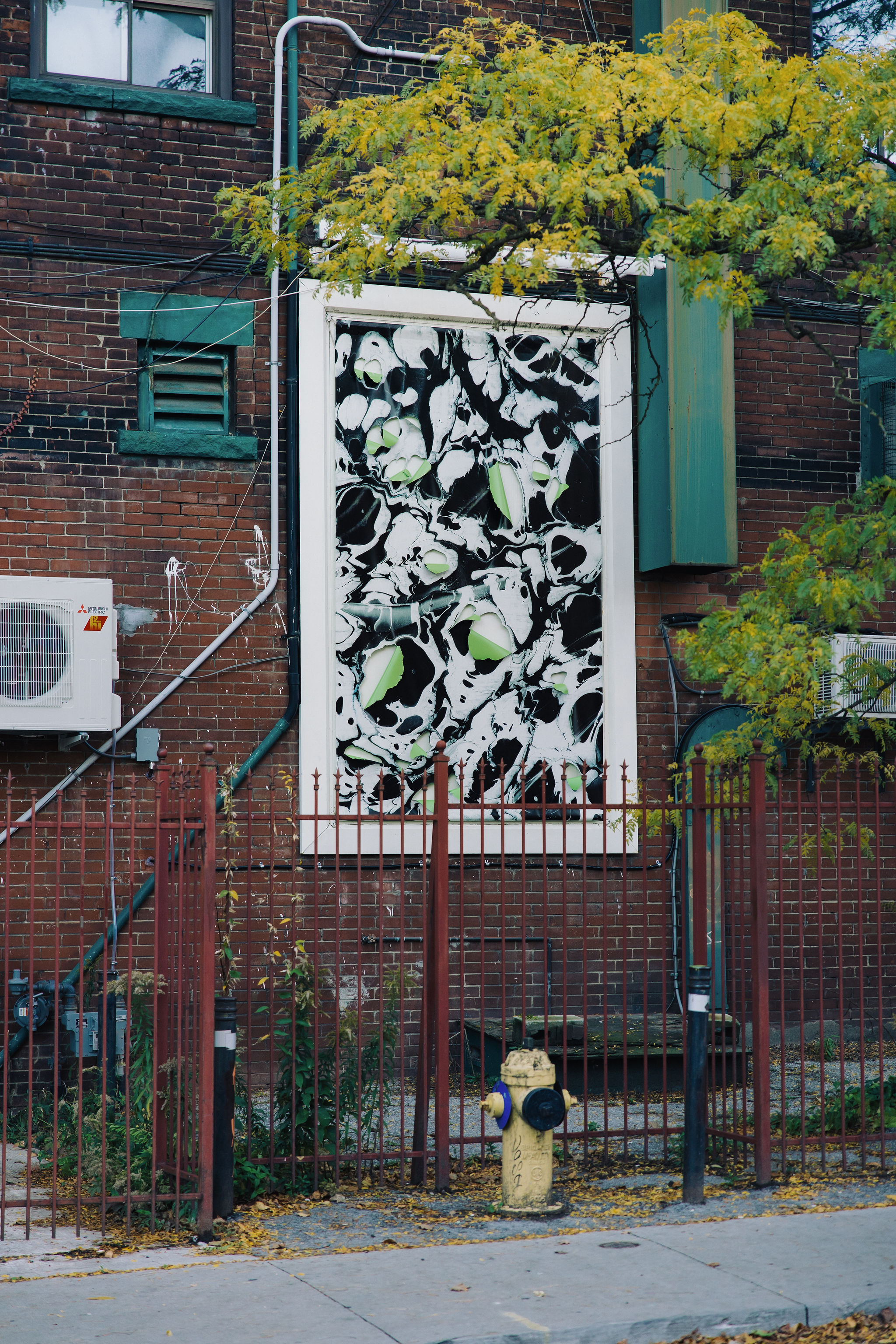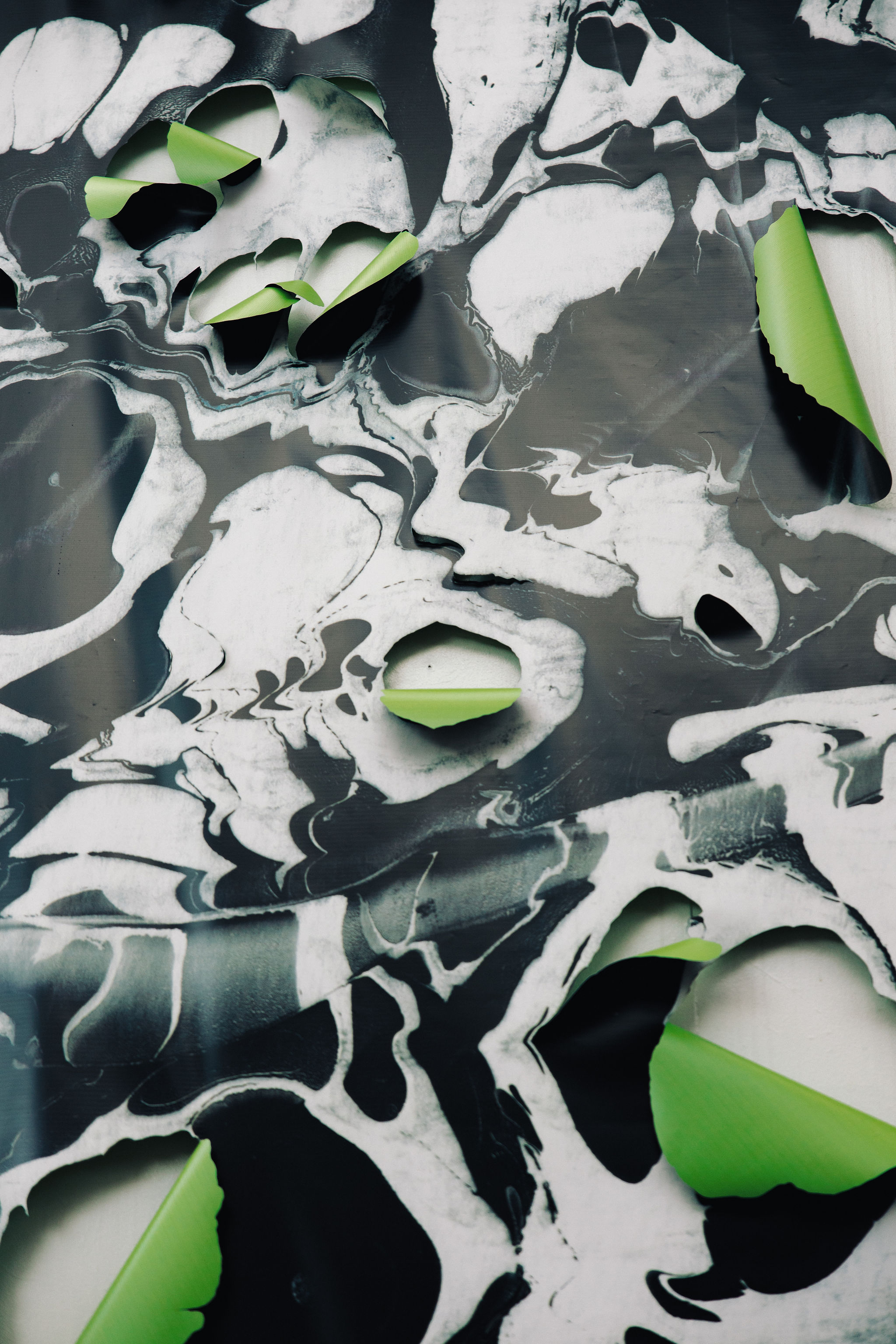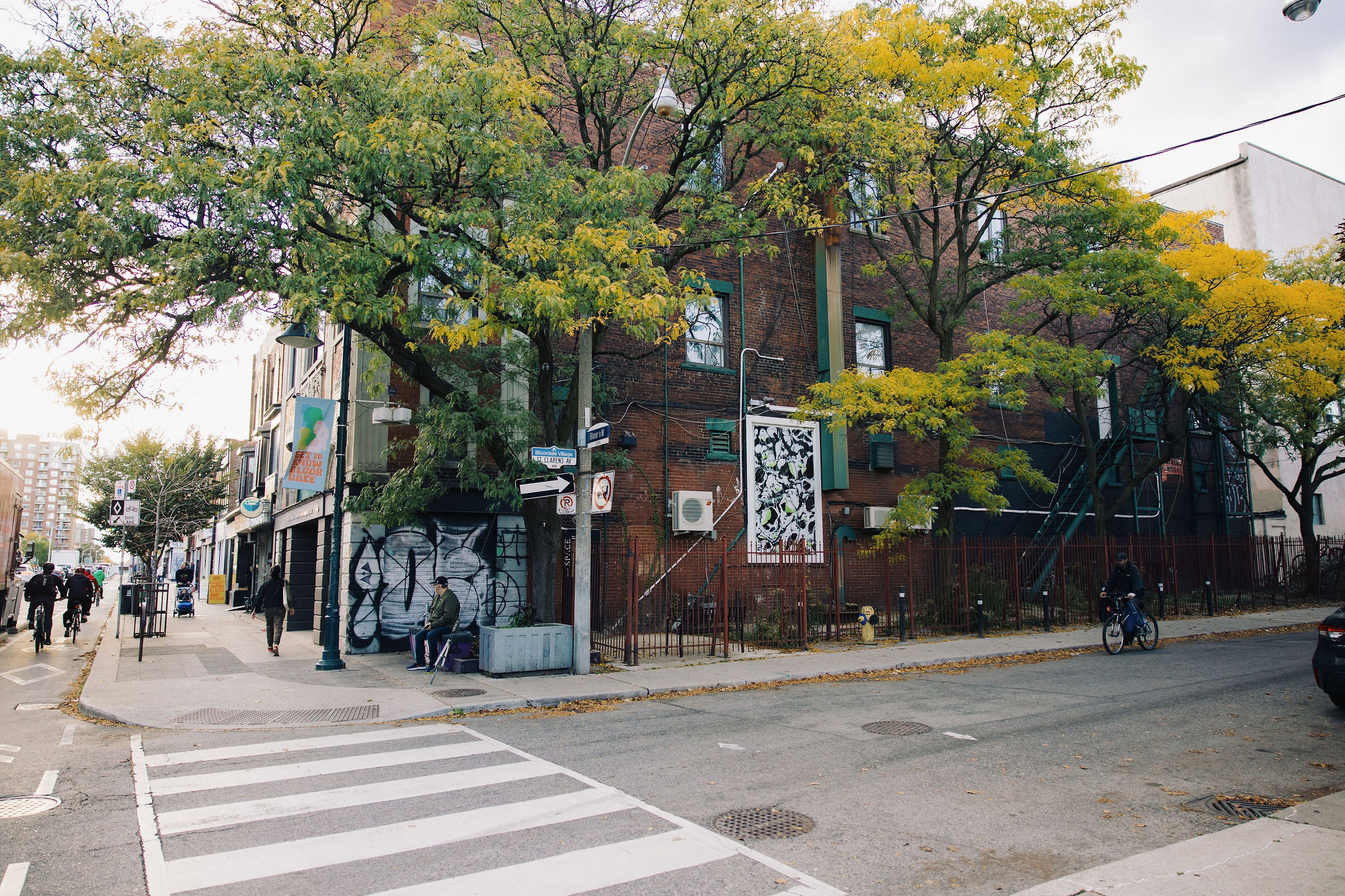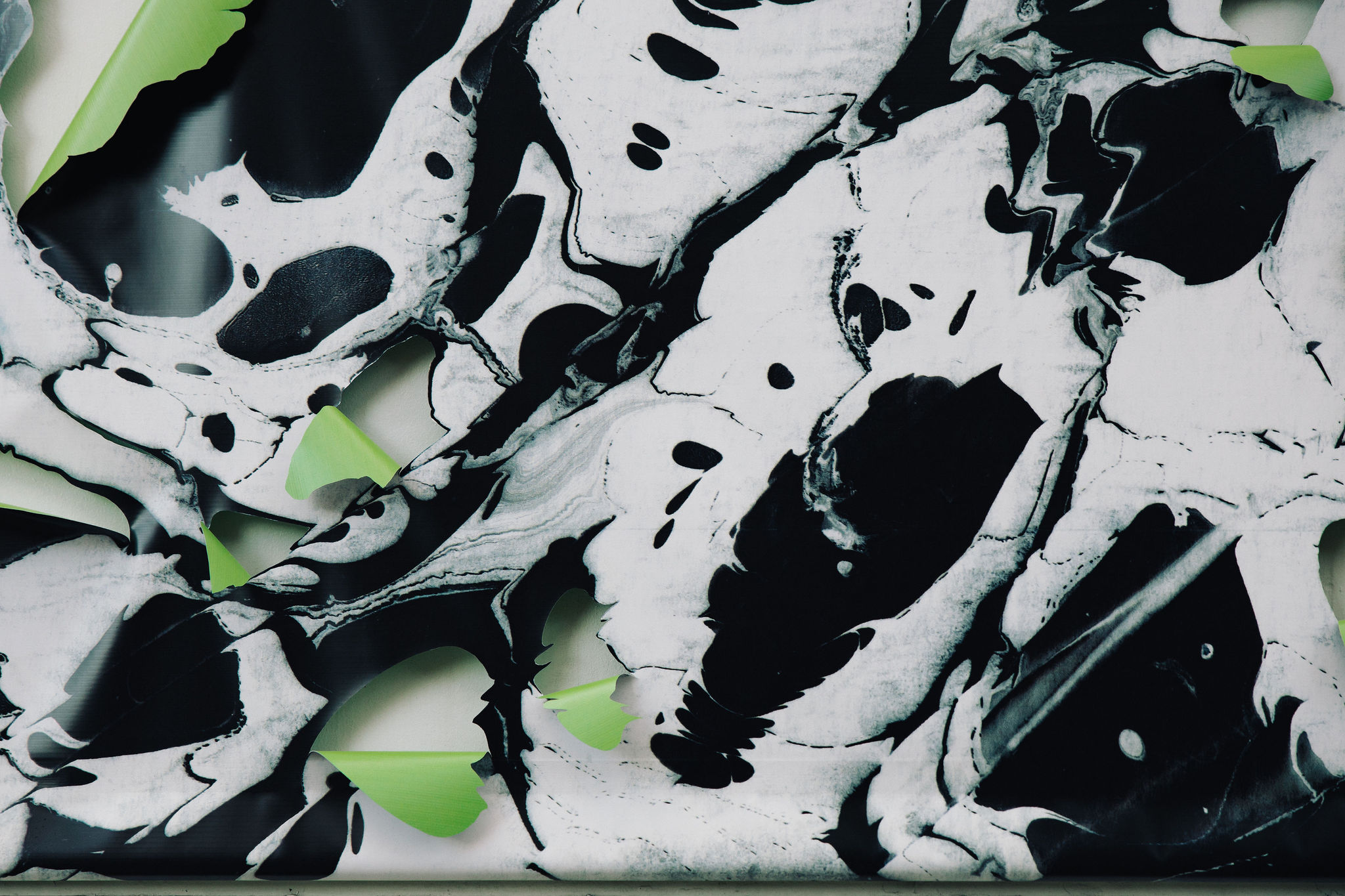SPACE invites one artist to produce a yearlong series of images for a public-facing billboard located on the east façade of Mercer Union.
Mercer Union invites artist Alize Zortlutuna to develop a yearlong series of works titled Surface Tension for the SPACE Billboard Commission in 2025-26. Working across video, performance, text, and sculpture, Zorlutuna’s practice uses gesture, repetition, and ritual to consider the relationships between bodies and ecologies. Often beginning with the forms and narratives that we carry with us, the artist’s work attunes to queer sensibilities for enlivening embodied and ancestral knowledges.
Their recent projects emerge from a longstanding interest in the traditional hydrographic printing technique of Ebru, and include works on textile and paper that resist mastery of conventional patterns in favour of emergent forms. At Mercer Union, the artist performs a sculptural study of the distinct marbled patterns of Ebru by using large-format digital reproduction and physical interventions. The series’ title alludes to the delicate and fundamental act of negotiation between water and suspended natural pigments that is central to the practice of Ebru. The artist explores this notion as a conceptual framework for reading a visual field and introduces a responsive sculptural language of cuts and folds that trace and transform the image.
For Zorlutuna, Ebru speaks to the moment when land and water, hand and breath, touch in a process of co-becoming. In each of the three sculptural banners, careful incisions splay the image, breaking its membrane to release the movements humming within. As changing light, brushing wind, and beading water act upon the works’ surface, a kinetic dialogue begins with the natural elements that were momentarily stilled in each composition.
Surface Tension: Cloudstone [Battal] is the first edition in the yearlong series; accompanying the work is a text by Chiedza Pasipanodya
the leap
a patterned field bubbles
liquid interference
surface stages a struggle
pushes pulls undoes
opposing forces move through
water and ox gall
delineating boundaries
revealing their permeability
black and white
visible and hidden
camouflage reveals hi vis
do you want to be seen or not seen
defense and resistance
a ruse that says there is more here than you can see
protest banners with their wind cutouts
vents made to prevent flight
be*hind beneath and beyond the image
mimicry and strategies of survival
concealment and adaptation
seen and withheld
do you want to be seen or not seen
the surface tension holds
the pattern and its undoing
thickened with resin
each colour has its temperament
each print unrepeatable
each impression shaped by breath angle
timing
intention
a slow ritual leading to a fast act
months of readiness for a moment of contact
heavens to earth
earth to paper
paper to cloud
cloud and stone
the palette departs
marbled colour fields
droplets of pigment
shaking water
distorting pattern
slicing print
an uncontainable energy
tension reads as haunting
accidental
spectral
controlled surrender
a vapourous cloud and stone
feather and weighted brick
a fade to black and white
as above so below
what happens within
echoes what happens without
space light and air
matter water here
and a gall bladder blood let
breathing releasing
body fluttering with the wind
exposed to weather and time
as pigments jump to paper
inner and outer states
defuse punishment
gestures of trust
granting permission for
process and meaning
to converge
body and world
breath and pattern
as the ink leaps
as the breath holds
to surface tensions
a correspondence
as the cut reveals
as the air passes through
making visible what insists
on being felt
as the prayer lilts
as the paper lifts
intervention and the inherited logics of ebru
Outside Mercer Union, Cloudstone [Battal], a large vinyl work by Alize Zorlutuna stretches across the billboard space. Zorlutuna’s practice began in 2012 through apprenticeship with a traditional ebru master, studying the devotional art of paper marbling as a form of repetition, patience, and discipline. A decade later, they began to intervene in that lineage, working with non-traditional colours, hybrid materials, and altered formats that challenge what devotion can look like. The break is not a rejection but a transformation: a queering of technique and thus of inheritance itself. When the primary pattern for Cloudstone [Battal] was made, Zorlutuna was in Uzbekistan, returning to a landscape of ancestry, with the work now carrying that charge of reckoning and release, located in ritual.
On the surface, their gestures of incising recall Lucio Fontana’s spatial cuts, yet rather than breaking away from form, Zorlutuna allows the inherited logics of ebru to softly guide the rupture. The act of cutting, in this context, becomes a way of looking, of asking what lies behind what we see, how images can both conceal and disclose—a formal gesture that mirrors postcolonial practices of questioning visibility, legibility, and the frameworks that determine meaning. In this sense, Cloudstone/Battal invites viewers to consider how surfaces are made, and what might be waiting, just beyond them.
— Chiezda Pasipanodya




